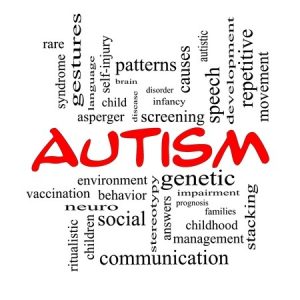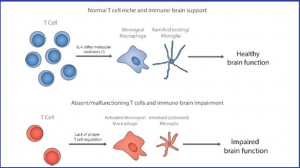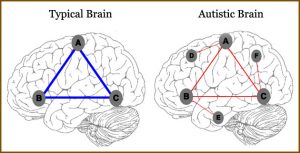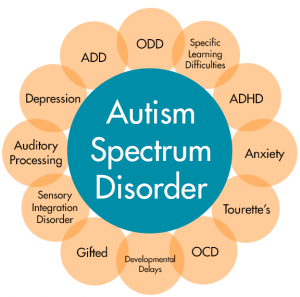
https://essenceofwellness.com/autismsupplementation/
Since the 1970’s the number of Autism Spectrum Disorder (ASD) diagnosis have greatly increased. This leaves people to wonder whether either the people have changed or if doctors have become more adept in classifying understanding ASD. In 2013 the Diagnostic and Statistical Manual of Mental Disorders, Fifth edition (DSM-5) reclassified not only the criteria for ASD but the disorder as a whole. Previously, there were five subdivisions of what we now consider ASD. Some scientists urge doctors not to hold the DSM-5 standards paramount, however, as the severity of ASD varies from individual to individual.
Brain:
A large contributor to the variety of symptoms and there degree to which they are observed is the neurological component to ASD. It is well established that ASD is a neurological disorder but the exact cause remains unknown. Scientists have several theories, some having more evidence and weight than others, of mechanisms in the brain that may contribute or even in some way cause ASD. Several of these theories include:
Broken Mirror Theory
Mirror neurons are specialized neurons in the brain that are largely responsible for a phenomenon regarded as the Chameleon Effect. This effect states that humans tend to mimic or copy another individual. This can be seen most prevalently seen in yawning. These neurons are often responsible for reflected social behaviors and tend to be the cause of why you begin to take on the personality of the people who you spend the most time with. In ASD, it is observed that part of this pathway is missing and often gives rise to the impairments in social interactions. Mirror neurons are also sometimes linked with empathy and having malfunctioning cells could cause an inability to perceive the emotion of others, a symptom that is one of the pillars of ASD diagnosis.
Immune Response
Perhaps the most interesting theory to explain ASD and also the one with the most support. It is seen in some individuals with ASD that they have a weaker immune system and are more susceptible to disease. In addition to this, there appears to be a decrease of T-cells in the brain in patient with ASD. T-cells are the immune system cells that release a chemical signal called cytokines which are essential in regulating the immune response and inflammation. The lack of T-cell volume results in less cytokines, which is cause of the neural inflammation that is observed in ASD. There was one study that was conducted with laboratory mice and investigated the effect of an induced immune response to offspring that had ASD like behaviors. In this study, the mother was infected thirty days before conception and the offspring were observed that ASD like behavior symptoms. This is what gave scientists the biggest clue that immune response played a key role in the development of ASD.

Figure 1: This picture demonstrates the difference between normal and abnormal T-cell functioning in the brain. It is seen the more T-cells present, the higher the amount of cytokines which are important in the inflammatory response. When there are less cytokines microglia are activated and can be responsible for the abnormal brain function seen in ASD. https://www.moriahus.org/us/study-may-shed-light-on-autism-and-brain-inflammation/
Faulty Synapses
A second major player that scientists believe plays a role in ASD in the misfiring of neurons due in one way or another to faulty synapses. Synapses are the communication space between neurons. Researchers see synapses in ASD brains being altered in several ways but the main outcome is there tends to be overcrowding in the brain. The pathway the deals with removing neurons when they are no longer needed is inhibited and causes a high concentration of neurons in the brain. The neurons cannot communicate effectively with each due to the there being too many. In ASD this can be seen with being overstimulated, there are just too many neurons in one area all firing at once it overwhelms the individual.

Figure 2: A drawing of an ASD brain (right) and normal brain (left) shows the increased amount of connections observed in patients in ASD which leads to overstimulation of the brain and gives an overwhelmed feeling in response. http://newscenter.sdsu.edu/sdsu_newscenter/news_story.aspx?sid=73005
There is also an altered shape and orientation of the synapse, which causes the neurons to be unable to properly send messages. Sometimes this is seen in ASD being the cause of unable to response in the normal way to events.
Behavior:
Of course understanding the brain is important when thinking about ASD but there is another component that may be overlooked when thinking about the disorder (hint: read the header of the section). Behavior is the ongoing result of the differences in the brain compared to the normal brain. Those with ASD have altered behavior, that has been clear since it was first discovered. Many of the behaviors that are associated with ASD are only detected in childhood while several continue to be present throughout life. Social isolation and loss of language skills are the two most prevalent throughout life. After the initial diagnosis, an individual can also be placed into categories which classify the severity of ASD.
Average to Severe ASD
As stated above, the two most common ways to identify ASD are delays in language development coupled with social impairments. ASD is typically arranged into three different levels, titled one to three. One states that an individual requires support and have noticeable social impairments as well as inflexible behavior. Many of the behaviors below are often exhibited with this level but not to the degree that is observed in others. Level two, “requires substantial support”, usually some language can be observed in this stage but tends to be limited. Social issues are more prevalent, as most communication is nonverbal, with difficulty coping with change, and inability to focus which often manifests in ADD or ADHD. The third level is most severe, not exchanging rarely any words if ever speaking. This makes social situations even more difficult and is marked occasionally by aggressive behavior. The behavior issues that are observed at the previous two levels are also seen here but at higher degrees.

Figure 3: Several disorders and symptoms surround ASD and overlap with each other to give rise to the behavior that is commonly seen. http://www.adoptontario.ca/autism
High Functioning ASD or “Aspergers”
Although there is not a DSM-5 diagnostic criteria for Aspergers anymore, the term is still used frequently today often to describe high functioning cases. The main difference between what people considers Aspergers and average ASD is there is language develops normally in an individual with Aspergers. The symptoms presented tend to be more mild as well. The social component of ASD is what is most commonly reflected in Aspergers because someone with this variation of the disorder could want to make friends but be unsure of how to do so. Social awkwardness very common. It is not the lack of empathy that categorizes Aspergers but rather being incapable of processing the emotion that the other person is feeling. As seen in the figure above, individuals with Aspergers often display many of the behavioral effects that are seen with ASD. Most prevalent are OCD, ADHD, ADD, repetitive behaviors, anxiety, and even more listed above. The degree to which they are experienced however is what varies from case to case. There is no one way put ASD or Asperger’s into a box and that is why is it essential to understand the link between the mechanisms in the brain and what is seen by the public.
The Link Between the Two
When looking at disorders such as ASD is important to note both the underlying cause as well as the behaviors that are exhibited for everyone to see. Brain and behavior are connected on the most basic level, one giving rise to another, and the understanding of both together is what leads to the acceptance. Research for both fields brings to light more ways to understand individuals with ASD and provide possible treatment, whether it be therapy or medicine based. ASD is a complex disorder to say the least but through learning more, the world as a community not only becomes more educated about causes of disorders but accepting toward those who are affected.
http://www.autism-society.org/living-with-autism/autism-and-your-family/